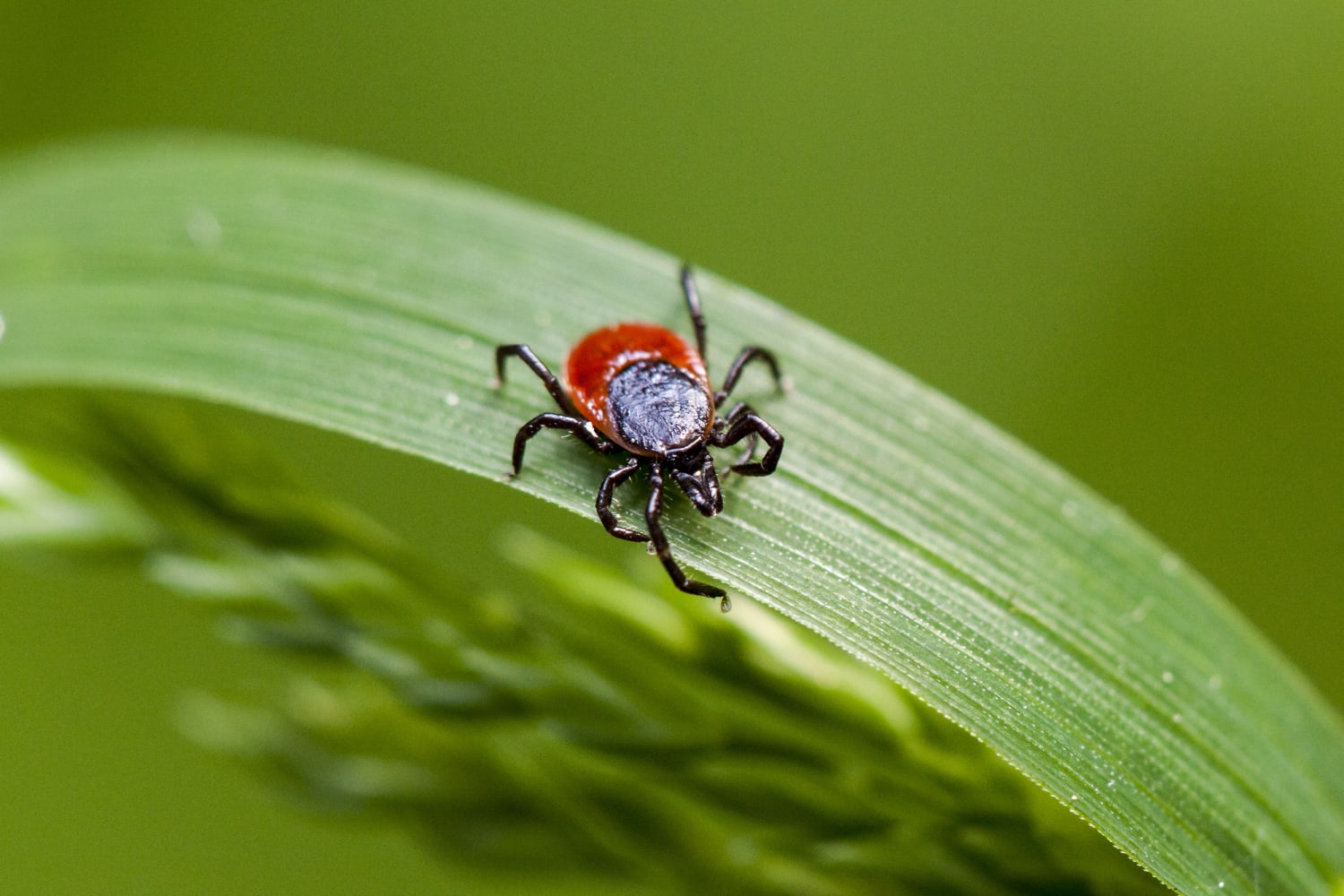
[ad_1]

Babesiosis, a tick-borne illness that may be deadly in uncommon instances, is changing into extra prevalent within the Northeast, the Facilities for Illness Management and Prevention mentioned in a report launched Thursday.
The findings present that among the many 10 states that reported babesiosis instances from 2011 to 2019, eight noticed their numbers rise, whereas simply two — Minnesota and Wisconsin — noticed declines.
What's extra, babesiosis in now thought of endemic in three new states: Maine, New Hampshire and Vermont. Beforehand, the illness was thought of endemic solely in Connecticut, Massachusetts, Minnesota, New Jersey, New York, Rhode Island and Wisconsin.
"9 years of knowledge present [an] improve in tickborne illness in elements of the U.S. that beforehand noticed few instances," mentioned Megan Swanson, an epidemiologist with the CDC’s Division of Parasitic Illnesses and Malaria, who co-authored the report.
Signs of babesiosis embody fever, chills, sweats, complications, physique aches, nausea, fatigue or muscle and joint ache. The illness has an total fatality charge of round 1% to 2%, in accordance with Dr. Peter Krause, a senior analysis scientist on the Yale Faculty of Public Well being, who wasn’t concerned within the CDC research.
As much as 20% of grownup instances and 50% of pediatric instances are asymptomatic. Older or immunocompromised persons are most weak to extreme outcomes like low blood platelet counts, kidney failure or acute respiratory misery syndrome, by which fluid builds up within the lungs.
The report highlights “an unlucky milestone within the emergence of babesiosis in america,” Krause mentioned. “Extra instances means extra sickness, and truly, some folks die.”
Babesiosis will be extra extreme than Lyme illness
People largely purchase babesiosis from deer ticks, whose bites can transmit Babesia parasites that infect crimson blood cells.
Most transmission happens from late Might to early September. Researchers assume that as local weather change drives longer durations of humidity, it creates extra hospitable environments for ticks.
“The ticks are surviving higher within the winter, and so the following spring, you may have extra ticks to chunk extra folks,” mentioned Edouard Vannier, an assistant professor who research babesiosis at Tufts Medical Middle in Boston and wasn’t concerned within the report.
The brand new information reveals that the variety of babesiosis instances rose 17-fold in Vermont and greater than 34-fold in Maine from 2011 to 2019.
Babesiosis can often be confused with Lyme illness, one other tick-borne sickness that causes fever and muscle aches. Whereas Lyme illness has a defining characteristic — a rash on the website of the tick chunk — Krause mentioned there isn’t an apparent babesiosis symptom. It is often recognized by a blood take a look at.
“Generally the affected person may have felt simply fatigued and never fairly proper, possibly a low-grade temp for per week or two, after which hastily they worsen,” Krause mentioned. “That’s often not the case with Lyme — you get it after which, bingo, you may have the rash and so forth.”
Babesiosis tends to be extra extreme than Lyme illness, though Lyme is much extra widespread. The CDC information round 30,000 instances of Lyme illness yearly, whereas round 16,500 whole instances of babesiosis had been recorded from 2011 to 2019.
Individuals can get each ailments directly, Vannier mentioned. He estimated that half of individuals with babesiosis even have Lyme illness.
An increase in tick-borne illness
Scientists recognized the primary human case of babesiosis within the U.S. in 1969. Its rising prevalence has coincided with an total rise in tick-borne illness, which rose by 25% from 2011 to 2019. From 1999 to 2019, confirmed instances of Lyme illness rose by 44%.
Researchers attribute the pattern to some elements. For one, deer populations have expanded, giving ticks extra alternatives to feed and reproduce. Individuals are additionally more and more touring to and constructing properties in forested areas.
On high of that, rising world temperatures have resulted in longer summers and shorter winters, and ticks thrive in heat, humid climates.
Krause additionally famous that older folks have come to symbolize a bigger share of the inhabitants and mentioned they're extra weak to extreme babesiosis and subsequently extra more likely to get official diagnoses.
“It tends to be the extra extreme instances, those that get into the hospital, which are reported," he mentioned.
The CDC report advisable that individuals who spend time outdoor in states the place babesiosis is endemic put on lengthy pants, use tick repellant and keep away from underbrush and lengthy grass.
Researchers mentioned babesiosis is most definitely extra prevalent than the CDC rely suggests, taking into consideration asymptomatic infections and on condition that not all physicians flag instances to state well being departments and never all states report instances to the CDC.
“Babesia is rather more of an issue than most of the people acknowledges and will be deadly — as much as 20% — in individuals who have HIV/AIDS or extreme most cancers with chemotherapy or people who lack a spleen,” Krause mentioned.
[ad_2]
Supply hyperlink
https://classifiedsmarketing.com/today-news/cases-of-tick-borne-babesiosis-disease-are-rising-cdc-says/?feed_id=73597&_unique_id=6413cc8652d7f